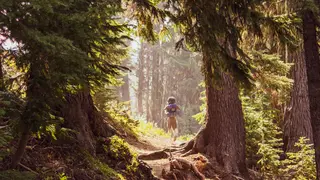
You’ve heard the term, but do you know the true facts about deforestation? The makers of paper products do. But trust us: Deforestation and another term you’ve probably heard, clear-cutting, are not what you think. In fact, modern foresters understand that responsibly harvesting trees actually protects our forests—and the day-to-day choices you make can help you do your part in keeping our forests healthy.

Fact 1: Deforestation and forest loss are not the same thing.
Deforestation refers to forests intentionally and permanently being destroyed, usually to convert the land space to nonforest purposes such as agriculture or development. But deforestation is not the only way the planet loses forests—in recent years, 23% of global tree cover loss has been courtesy of wildfire, and disease and insects also lead to tree loss. Depending on how severe the forest loss is, as well as the triggers of that loss, some forests regenerate on their own. Others will need dedicated restoration to bring the forests back to their state of equilibrium and prevent permanent loss.

Fact 2: Agriculture is the No. 1 cause of global deforestation.
Industrial agriculture practices—including livestock grazing, animal feed and crop-based biofuels—lead the way in deforestation. Mining, drilling and urban development also play a role. These industries don’t rely on forest regeneration in the way that the paper industry does, so they don’t have a strong financial incentive to maintain forests. The volume of wood grown in the U.S. is roughly twice the amount that is harvested, so choosing paper products (and recycling them) helps keep that regenerative cycle moving forward.

Fact 3: The areas of the world that consume the most forestry products have the least deforestation.
That may sound like a paradox, but the fact is, the pulp and paper industry relies on forest regeneration for economic stability. That’s why U.S. papermakers are invested in keeping forests thriving, via privately owned and managed forests that are planted with purpose and sustainably harvested. The paper industry isn’t tearing through public lands to stay afloat—90% of the wood used to make the forestry products we use every day comes from these private, sustainably managed working forests, many of which are certified as sustainable. So when you choose those products, you actually help support healthy forest management and regeneration.

Fact 4: Deforestation isn’t the issue in the U.S. (like it is in tropical areas such as the Amazon). The U.S. has more forestland today than it has in the past 50 years.
There are 20% more trees in the U.S. now than there were in 1970, and 18 million more acres of forests have been planted since 1990. That’s not an accident: Today’s forest industries nourish the land that nourishes their bottom line, harvesting less than 2% of U.S. forestland annually. (In fact, most of that 2% is used for wood products such as lumber, with a fraction going to produce paper and paper products.)

Fact 5: Even the World Wildlife Fund recognizes the pulp and paper industry’s role in healthy forests.
Take it from the experts: Paper is part of the solution. “Responsible pulp and paper operations can bring many benefits to forests, local economies and people, particularly in rural areas,” the World Wildlife Fund—one of the global leaders in sustaining the natural world—says of the industry. “Many pulp and paper companies are demonstrating leadership in responsible forestry and plantation management as well as in clean manufacturing processes and recycled content. U.S. consumers can also play a key role in driving responsible forestry through their paper choices.”
Deforestation has plummeted in the past 30 years—but that doesn’t mean you can’t play your part in protecting U.S. forests. The choices you make every day ladder all the way up to the treetops. By choosing paper products, you’re actively supporting forest health. And when you recycle those products, you’re a part of the cycle that will keep our land vibrant, resilient, and sustained.
FAQ: More Deforestation Facts
-
Among the effects of deforestation are increased greenhouse gases (as trees are no longer around to absorb carbon dioxide from the atmosphere), loss of wildlife habitats, altered rainfall patterns and water cycles, soil erosion and flooding, and threats to Indigenous communities that rely on forests.
-
-
-
-
-
Learn more about why choosing paper protects our forests.




